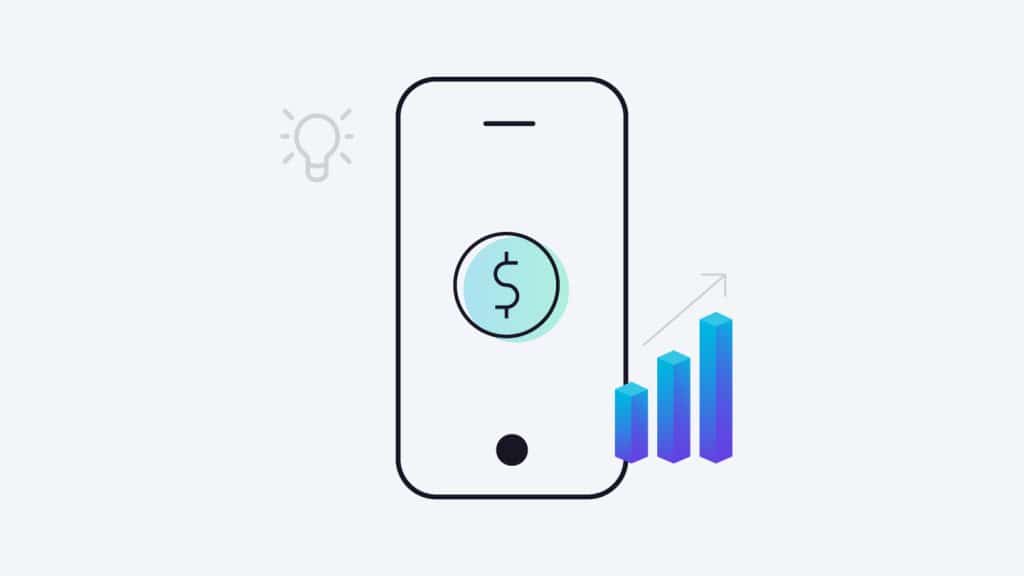Being able to invent and develop an attention-grabbing game is a very different activity from making money out of it. But mobile gaming apps monetization is a fantastic way to generate incomes.
Every developer needs to use strategies that allow them to obtain money from their app, but not all the strategies produce the same effects. Due to this, all mobile game developers must analyze different strategies existing, and only then they can select the most appropriate for their app.
Addiction au Jeu : Solutions et Ressources en France
La dépendance au jeu est un problème sérieux qui affecte de nombreuses personnes en France. Entre l’attrait des jeux d’argent en ligne et les casinos physiques, de plus en plus de gens se retrouvent piégés dans un cercle vicieux de jeu compulsif. Dans cet article, nous explorerons les solutions et ressources disponibles en France pour lutter contre cette addiction dévastatrice.
Nous aborderons les différents types de jeux de hasard qui peuvent mener à la dépendance, les signes révélateurs à surveiller, ainsi que les démarches à suivre pour obtenir de l’aide. De plus, nous mettrons en lumière les organismes et professionnels spécialisés dans le traitement de l’addiction au jeu, offrant un aperçu des options de soutien disponibles pour les personnes concernées. Comment pouvons-nous briser ce cycle destructeur et aider ceux qui luttent contre cette dépendance insidieuse? Découvrez les réponses dans cet article engagé sur l’addiction au jeu en France.
La Prévention de l’Addiction au Jeu en France
L’addiction au jeu est un problème sérieux en France, affectant de nombreuses personnes de tous âges. Pour ceux qui luttent contre cette dépendance, il est essentiel de savoir qu’il existe des solutions et des ressources disponibles pour les aider à surmonter ce problème. Les professionnels de la santé et les associations spécialisées offrent un soutien précieux aux personnes souffrant d’addiction au jeu.
Les personnes confrontées à une dépendance au jeu peuvent trouver de l’aide auprès de structures telles que SOS Joueurs, une association reconnue pour son travail dans la prévention et le traitement des addictions liées au jeu. En outre, des centres spécialisés dans les troubles du jeu proposent des programmes de traitement adaptés aux besoins individuels des patients, les aidant à reprendre le contrôle de leur vie.
En France, il est également possible de contacter des lignes d’écoute et des services d’assistance dédiés aux personnes en difficulté avec le jeu. Ces ressources offrent un soutien confidentiel et professionnel pour aider les individus à faire face à leur dépendance et à trouver des solutions pour se rétablir. Il est crucial de sensibiliser sur ce sujet et d’encourager ceux qui en ont besoin à chercher de l’aide pour surmonter leur addiction au jeu.
Les Ressources Disponibles pour les Personnes Souffrant d’Addiction au Jeu
En France, l’addiction au jeu est un problème sérieux qui affecte de nombreuses personnes. Selon des données récentes, le nombre de joueurs pathologiques a considérablement augmenté ces dernières années. Ce phénomène a rapporté des conséquences néfastes sur la vie personnelle, professionnelle et financière de ces individus.
Pour lutter contre l’addiction au jeu, il existe heureusement des solutions et des ressources disponibles en France. Les personnes souffrant de ce problème peuvent se tourner vers des centres spécialisés qui offrent un soutien psychologique et des programmes de traitement adaptés. Ces établissements aident les joueurs compulsifs à surmonter leur dépendance et à reprendre le contrôle de leur vie.
En plus des centres de traitement, il existe des associations et des organismes qui fournissent un soutien et des conseils aux personnes touchées par l’addiction au jeu. Ces structures mettent en place des groupes de soutien, des lignes d’écoute et des ressources en ligne pour accompagner les joueurs pathologiques dans leur démarche de guérison. Il est crucial pour les personnes concernées de se tourner vers ces ressources pour obtenir de l’aide.
En conclusion, il est essentiel de sensibiliser le public sur les dangers de l’addiction au jeu et de promouvoir les ressources disponibles en France pour aider les personnes affectées. Avec un soutien adéquat, il est possible de surmonter cette dépendance et de retrouver une vie équilibrée et épanouissante.
Les Programmes de Réhabilitation et de Traitement en France
L’addiction au jeu est un problème sérieux en France, affectant de nombreuses personnes de tous âges et milieux sociaux. Heureusement, il existe des solutions et des ressources disponibles pour aider ceux qui luttent contre cette dépendance.
Les joueurs compulsifs peuvent trouver de l’aide en contactant des associations spécialisées telles que Adictel et SOS Joueurs. Ces organismes offrent un soutien professionnel, des conseils personnalisés et des programmes de traitement pour aider les personnes à surmonter leur addiction au jeu.
En outre, le gouvernement français a mis en place des mesures de prévention et de sensibilisation pour lutter contre l’addiction au jeu. Des campagnes d’information sont menées régulièrement pour informer le public des risques liés au jeu excessif et pour encourager ceux qui en souffrent à demander de l’aide.
Il est important de se rappeler qu’il n’y a pas de honte à demander de l’aide en cas d’addiction au jeu. En utilisant les ressources et les solutions disponibles en France, il est possible de surmonter cette dépendance et de retrouver une vie équilibrée et saine.
L’Importance de la Sensibilisation Publique sur l’Addiction au Jeu
L’addiction au jeu est un problème sérieux en France, affectant de nombreuses personnes de tous âges. Cependant, des solutions et des ressources sont disponibles pour aider ceux qui luttent contre cette dépendance. Tout d’abord, il est essentiel de sensibiliser le public aux dangers du jeu excessif et de l’impact négatif qu’il peut avoir sur la vie quotidienne.
Des organisations telles que Adictel et SOS Joueurs offrent un soutien précieux aux personnes en proie à une addiction au jeu. Ces associations proposent des services d’écoute, de conseil et d’orientation vers des professionnels spécialisés dans la prise en charge des troubles liés au jeu. Il est crucial pour les individus concernés de ne pas hésiter à demander de l’aide et à se tourner vers ces ressources.
Par ailleurs, le gouvernement français a mis en place des mesures visant à réguler l’industrie du jeu et à protéger les consommateurs vulnérables. Des limites strictes sont imposées en matière de publicité pour les jeux d’argent, et des dispositifs de prévention de l’addiction sont renforcés pour limiter les risques pour la population.
En conclusion, il est crucial de reconnaître l’ampleur du problème de l’addiction au jeu en France et d’encourager ceux qui en souffrent à chercher de l’aide. Avec le soutien des ressources existantes et une sensibilisation accrue, il est possible de surmonter cette dépendance et de retrouver une vie équilibrée et épanouissante.
L’Implication des Institutions et Organisations dans la Lutte Contre l’Addiction au Jeu
L’addiction au jeu est un problème sérieux en France qui affecte de nombreuses personnes. Heureusement, il existe des solutions et des ressources disponibles pour aider ceux qui luttent contre ce problème. Parmi les options offertes, les centres spécialisés dans la prise en charge des addictions, tels que l’Association SOS Joueurs, proposent un soutien professionnel et une écoute attentive pour les personnes affectées par la dépendance au jeu.
En plus des centres spécialisés, les plateformes en ligne telles que Joueurs Info Service offrent des informations et des conseils pour aider les individus à reconnaître et à surmonter leur dépendance au jeu. Ces ressources fournissent un soutien précieux pour ceux qui cherchent à reprendre le contrôle de leur vie et à se libérer de l’emprise du jeu. En encourageant la sensibilisation et en offrant un soutien adapté, la France s’efforce de lutter contre l’addiction au jeu et d’accompagner les personnes touchées sur le chemin de la guérison.
En conclusion, l’addiction au jeu est un problème sérieux en France, mais il existe des solutions et des ressources disponibles pour aider ceux qui en souffrent. Que ce soit par le biais de consultations individuelles, de groupes de soutien ou de lignes d’assistance spécialisées, il est essentiel de reconnaître et de traiter ce trouble. En prenant des mesures dès les premiers signes d’addiction, il est possible de retrouver un équilibre de vie sain. N’hésitez pas à vous tourner vers les organismes compétents pour obtenir de l’aide et du soutien dans votre lutte contre l’addiction au jeu.
Best Strategies for Mobile gaming app monetization
A good share of the success (or failure) in the monetization of your mobile game will depend on finding the most appropriate strategy. Because of this, we want to show you the most used ones in mobile gaming app monetization.
In-App Ads
During the year 2022, this became a long-established strategy for mobile games monetization. For developers, it has been quite efficient, since it provides very good results.
This mobile gaming app monetization approach gives users the opportunity to entertain themselves by playing a mobile game for free, while the creator receives economic benefits from the ads that appear in it.
This strategy is also quite attractive for advertisers, because their ads will be shown to all players, who can become new customers. In the world of marketing, it has been proven that 47% of players remember the ads for free games, so this approach brings a win-win situation.
Playable Ads
Depending on the type of mobile game and what the ad format is, choosing to pay for your app’s advertising on an appropriate network may be the solution if you are looking for mobile gaming app monetization.
But, it is necessary for you to determine very well the kind of format that you will use to attract attention with your ad.
This is not a recommended method for everyone. However, if you choose it, the path you should follow is to let users download the game for free and allow in-app purchases. In this way, users will decide whether if they want to continue playing for free or pay for additional content, gems, shields, coins, extra lives, among others.
Everything should be focused on the future monetization of the mobile game app. Therefore, when locating a paid banner ad on your gaming app, you should have in mind the experience the users may have within it.
In general, the chances of success of monetization on a new mobile game app depends on the type of advertisement that is shown. In fact, here are 7 tips for Monetizing an app.
In-App Purchases
In-App purchase -or in this case, In-Game purchases – is a strategy where developers can launch a free-download app and then include additional features for users to buy within the game. Some tactics used with this strategy include limited-time package offers, boosting packs (for users to level up faster), booster items, and exclusive events that unlock new missions, quests o challenges in the game.
An interesting new perspective for this type of monetization strategy is allowing users to buy an ad-free upgrade, in which they can pay one prize to avoid seeing ads while the game is running.
Paid Games
As opposed to previous strategies, the paid games are based on the idea that a user must buy the game in order to download and install it in their devices.
This monetization strategy works well with well-known companies and developers, whose fan base are willing to pay in order to download the game. An example of this is Minecraft, a mobile payment game that made it to the “Most money raised in app stores” list.
Subscription Model

A subscription model has demonstrated to be one of the most profitable of the methods for developers. When done right, game-makers can guarantee a constant income stream from users every month. It works by asking users for a regular payment to access content, features, and any additional items required to play the game, or to opt out of advertisements.
Usually, subscriptions will renew automatically, particularly if the chosen payment method was a credit card. If the subscription is paid with a gift card, they usually have an expiration date and won’t be renewed automatically.
A common strategy used in subscription models are the battle passes. With this strategy, users must buy a “battle pass” that will allow them to unlock special rewards, missions and quests that will improve their gaming experience and help them be part of the game’s community online.
If users wants to participate in another season, fighting in another battle, they will have to renew the subscription. This strategy has worked for games like Fornite, Homespaces, Arcero, and PUBG Mobile.
A Mixed Monetization Strategy
It is possibly the most used strategy for mobile games monetization. When a mixed monetization strategy is implemented, it allows developers multiple ways to earn revenue in mobile gaming app monetization.
Using this technique, it is possible to combine the subscription with the purchases within the application and the implementation of commercial advertisements. Imagine that the user will be rewarded for viewing an ad as a method to mobile gaming app monetization.
Rewards include points, a shield, an extra life… Anything small that keeps the user moving forward.
Without a doubt, it is a very attractive strategy. It will bring a compelling experience to users because, even when they have paid a subscription, they will also receive additional gifts and rewards for certain activities.
An alternative is offering gamers an option to pay for a larger subscription if they don’t want to see ads. However, this strategy will work depending on the type of mobile game in question.
Meta Layer Monetization
By tradition, mobile games monetized only one game, which we could call the main one. Therefore, users were offered to buy coins, energy, extra lives, etc.
That has already changed. Now, developers have found a way to monetize their game apps in layers, with main and sub-plots, such as meta collectibles or customization. Everything works in mobile gaming app monetization.
One game that has used this methodology is Project Makeover, with a 3-layer gameplay, including customization and a meta-narrative.
Each meta layer will monetize on its own, benefiting the developer directly and indirectly. Playing a meta layer can be limited to one day or one task. This can be your strategy for mobile gaming app monetization.
That will keep users looking forward to playing the next scenario, and they will be indirectly attracted to the meta items you need to acquire to stay in the game.
Conclusions
Mobile gaming app monetization requires knowledge of the market and the preferences of users.
It is essential to meet their expectations, satisfy their interests and create an engaging game that makes them pay for a subscription, buy gameplay items or receive rewards for watching ads.
Success will depend on the developer choosing the monetization strategy that best suits its product and their audience.







